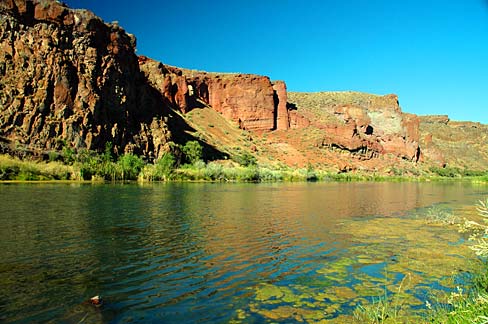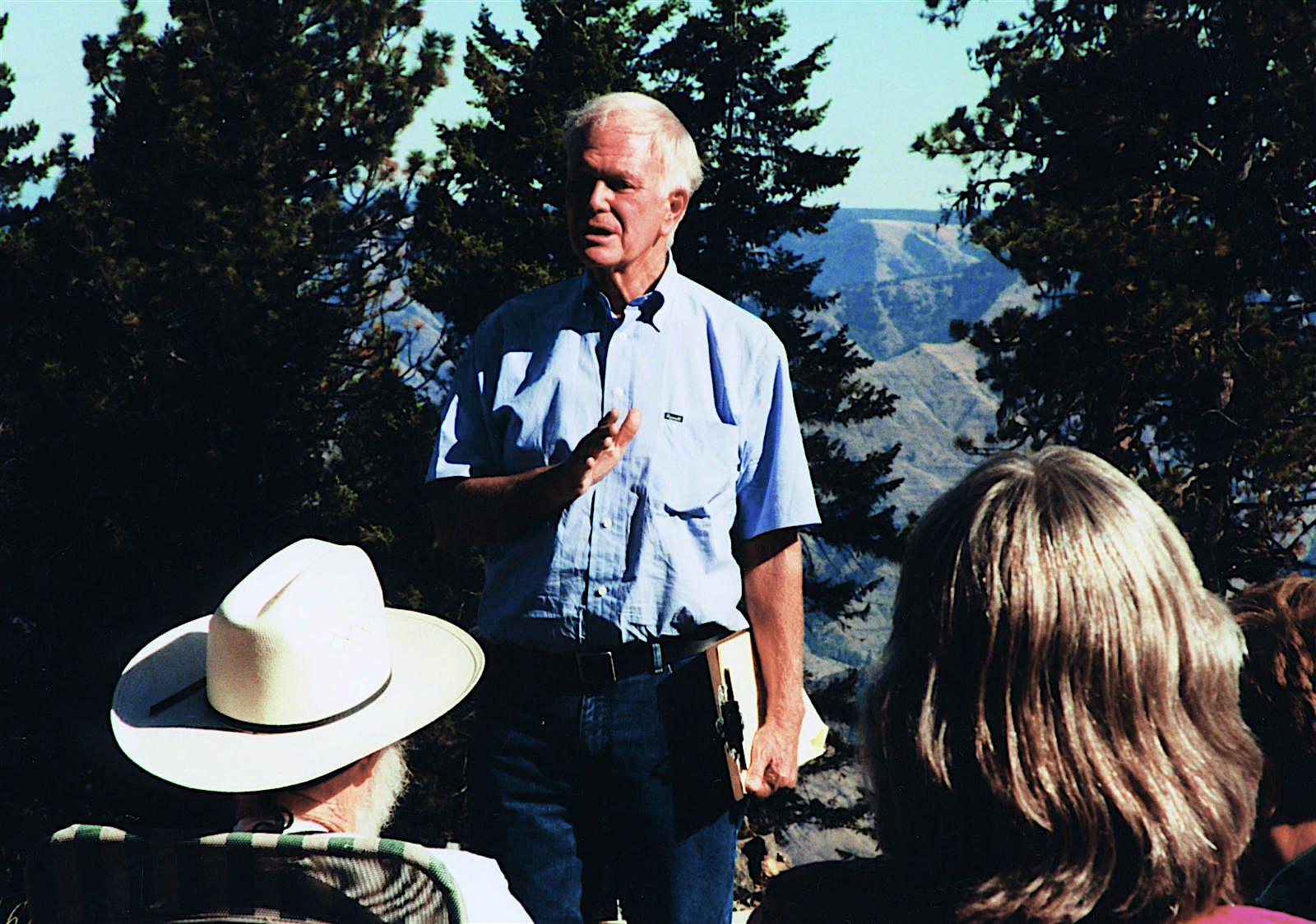The 2016 election of Donald Trump in the Electoral College was a troubling development on many fronts, including that of conserving certain federal public lands as national monuments for this and future generations. The Trump administration is considering entreaties from some aggrieved Republican U.S. senators and members of Congress—as well as some shortsighted local economic interests—to either abolish, reduce, or weaken national monuments proclaimed by previous presidents. They are concentrating on those national monument proclamations by all presidents whose last names start with the letter O.
Proclamations: Exercising Congressionally Delegated Authority
President Obama’s use of the congressionally delegated authority to proclaim national monuments was both vast and visionary. Since President Theodore Roosevelt signed the Antiquities Act of 1906, all U.S. presidents except for Republicans Nixon, G.H.W. Bush, and Reagan have utilized the authority by proclaiming national monuments. Some presidents have proclaimed a lot, some just a few, and some none at all.
The Antiquities Act is as eloquent and visionary as it is brief. Here are the two most important provisions:
(a) Presidential Declaration.—
The President may, in the President’s discretion, declare by public proclamation historic landmarks, historic and prehistoric structures, and other objects of historic or scientific interest that are situated on land owned or controlled by the Federal Government to be national monuments.
(b) Reservation of Land.—
The President may reserve parcels of land as a part of the national monuments. The limits of the parcels shall be confined to the smallest area compatible with the proper care and management of the objects to be protected.
It is important to note that when a president proclaims a national monument, the president is not exercising constitutional authority as president but rather exercising a constitutional authority granted to Congress in the “property clause” (Article IV, Sec. 3, Clause 2) that Congress has delegated to the president. Congressional power over federal public lands is a matter of very settled law, but that doesn’t mean a few whackos don’t reject it.
National monuments are “proclamations,” not “executive orders.” The president issues executive orders under the faithful execution clause of the Constitution (in Article II, Section 3). A president may expand, revoke, or modify a previous executive order. An executive order and a presidential proclamation under the Antiquities Act are absolutely not one and the same.
Mistaken Ideas About Undoing Proclamations
National monument opponents believe a president can undo a national monument proclamation of a predecessor. They are wrong. Let’s examine three potential (il)legal lines of attack: abolition, reduction, and weakening.
Abolition
The command of the Antiquities Act’s paragraph (a) is clear: the president may declare national monuments. There is no authority to un-declare them. If Congress had meant for a later president to overrule a previous president, it would has said so. Congress did not.
No president has ever abolished a prior president’s national monument. Congress has, but Congress can.
Reduction
Paragraph (b) requires that a national monument be the “smallest area compatible with the proper care and management of the objects to be protected.” Another gambit—which national monument opponents believe may have a better chance of withstanding judicial scrutiny—is for a later president to officially proclaim that a previous president got it wrong in the original proclamation and secured too much area as a national monument. Another argument might be that factual circumstances have changed, so a smaller area will still protect the objects proclaimed for protection.
Some presidents have by subsequent proclamation reduced the area within a national monument. In some cases, the reduction was accompanied by an expansion elsewhere. While this is precedent in practice, it is not precedent in court—because no court has ever been asked to rule on the matter.
Again, if Congress had meant for a later president to overrule a previous president, it would have said so. Congress did not.
Weakening
The final gambit may be gutting the protections afforded in the national monument proclamation. Modern national monument proclamations have tended to be very specific and directive as to how the administering agency is to manage the monument (what is allowed and not allowed, and that kind of thing). Some presidents have, by subsequent proclamation, changed management requirements.
While this is precedent in practice, it is not precedent in law—because no court has ever been asked. Again, if Congress had meant for a later president to overrule a previous president, it would have said so. Congress did not.
If President Trump tries to abolish, reduce, or weaken a national monument proclaimed by a predecessor, he will be challenged in federal court and we shall all see if the Antiquities Act means what it says.
For those who want to go deeper on national monuments and law and the power of a subsequent president to cause mischief, I commend to you:
• “The Monumental Legacy of the Antiquities Act of 1906” (Georgia Law Review, Winter 2003) by professor of natural resources law Mark Squillace of the University of Colorado School of Law
• “Antiquities Act: Scope of Authority for Modification of National Monuments” (November 14, 2016) by Alexandra M. Wyatt, legislative attorney for the Congressional Research Service
Endnote: A Novel Legal Challenge
Two lawsuits have been filed to overturn the 47,624-acre expansion of the Cascade-Siskiyou National Monument (CSNM) in Oregon by President Obama in 2016. The original CSNM was proclaimed by President Clinton in 2000 (~52,000 acres since enlarged by 13,359 acres due to the acquisition of generally undeveloped inholdings from willing sellers). The first case was filed in the U.S. District Court for the District of Columbia by the Association of Oregon and California Counties (“Addicted Counties”), while the second case was filed in the United States District Court for Oregon (Medford) by a couple of timber companies (“Big Timber”).
Addicted Counties believe that their share of timber receipts from the sale of federal timber within the monument expansion to Big Timber will decline. Both Addicted Counties and Big Timber allege that the Antiquities Act of 1906 is trumped (no pun intended; it used to be such a fine word) by the Oregon and California Lands Act of 1937. The latter statute generally prescribes the management of more than two million acres of federal forestland in western Oregon. Big Timber and Addicted Counties believe the O&C Act is a timber uber alles statute, though they’ve yet to find a federal court judge who agrees with them. This is Big Timber’s and Addicted Counties’ latest of several (so far unsuccessful) attempts to have a court declare that the O&C Act of 1937 is indeed a combination of the 11th Commandment and the 28th Amendment. The O&C Act is, in fact, Congress’s first attempt to write a multiple use statute, and along with statutes enacted before and after 1937 (such as the Endangered Species Act and the Clean Water Act) guide the management of the O&C lands. Both Earthjustice and the Western Environmental Law Center have intervened in the two cases on behalf of several conservation organizations (woe unto Big Timber and Addicted Counties).
To get down and dirty on this obscure statute that applies only to certain federal public lands in western Oregon, I commend to you:
• “The Oregon and California Lands Act: Revisiting the Concept of ‘Dominant Use’” by Deborah Scott and Susan Jane Brown (Journal of Environmental Law and Litigation, 2006)
• “The Oregon and California Railroad Grant Lands’ Sordid Past, Contentious Present, and Uncertain Future: A Century of Conflict” by Michael C. Blumm and Tim Wigington (Boston College Environmental Affairs Law Review, 2013).
[A Monumental Battle, Part 2: National Monuments in the Congress addresses current congressional shenanigans.]













